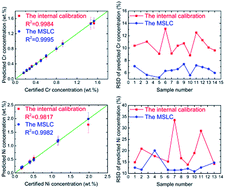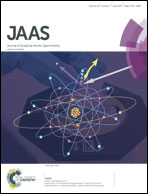Analytical-performance improvement of laser-induced breakdown spectroscopy for steel using multi-spectral-line calibration with an artificial neural network
Abstract
A multi-spectral-line calibration (MSLC) approach based on an artificial neural network (ANN) was developed to improve the accuracy and precision of steel analysis using laser-induced breakdown spectroscopy (LIBS). The intensity ratios of multiple spectral lines of target and matrix elements were used to train an ANN. The resulting model was able to relate the spectra to the concentrations of target elements more accurately than the conventional internal calibration approach, which led to improvements in the accuracy and precision of the LIBS analysis. This approach was applied to LIBS analysis of steel samples to predict the Cr and Ni concentrations. Compared with a conventional internal calibration approach, the root-mean-square errors of cross-validation for Cr and Ni decreased from 0.018 and 0.067 wt% to 0.010 and 0.023 wt%, respectively, using the proposed MSLC, and the average values of the relative standard deviation for Cr and Ni decreased from 11.3 and 19.5% to 6.4 and 12.9%, respectively.


 Please wait while we load your content...
Please wait while we load your content...